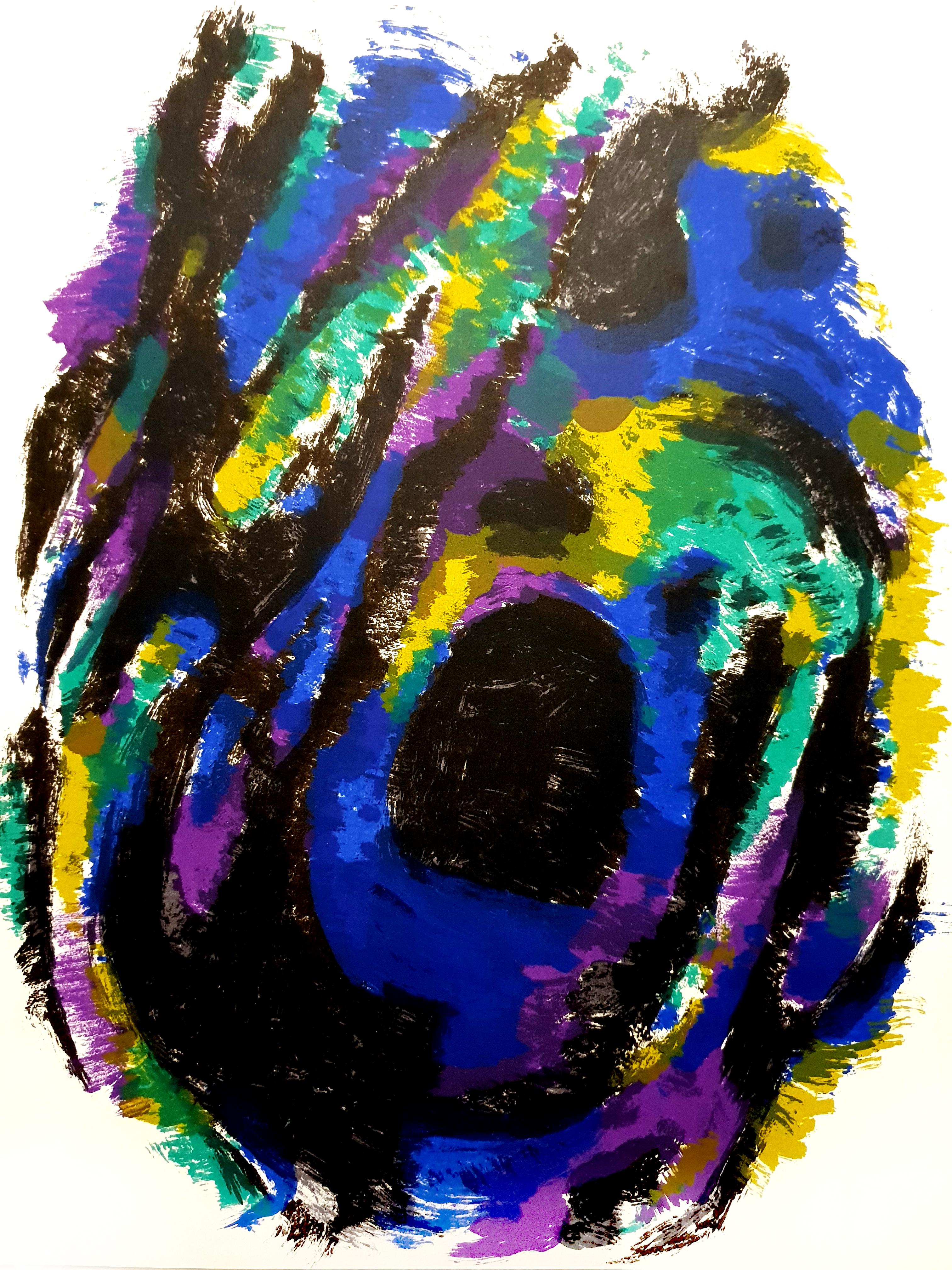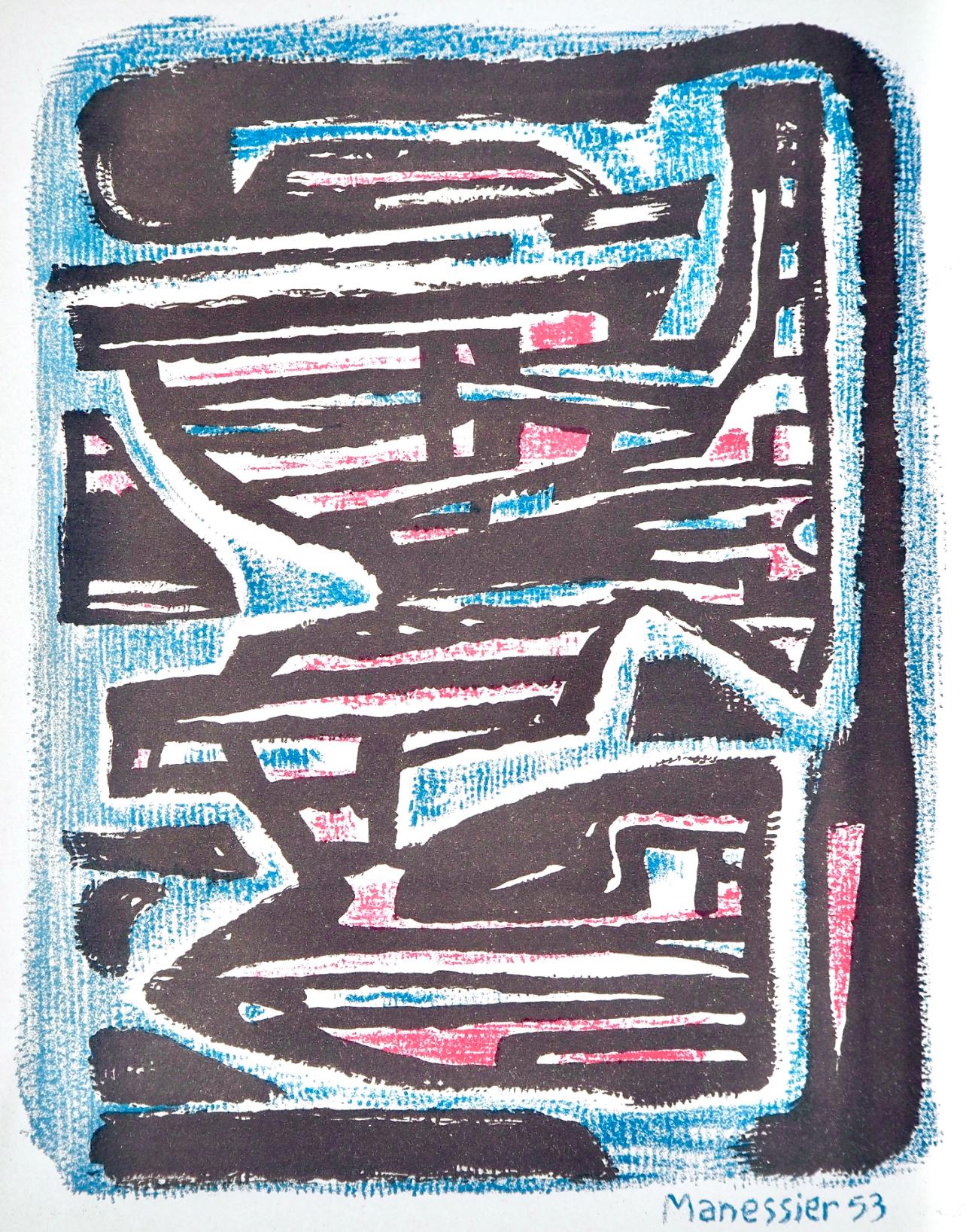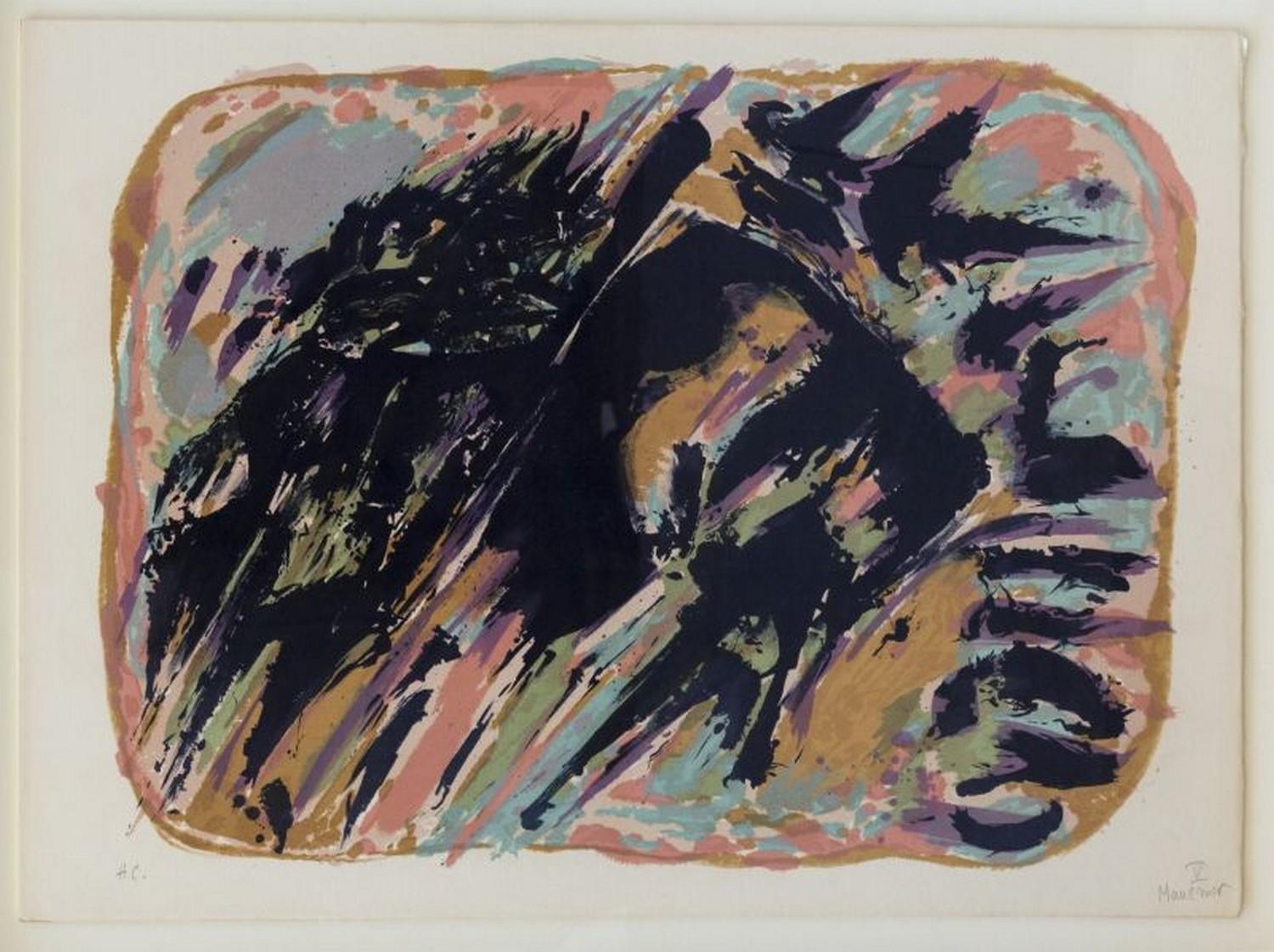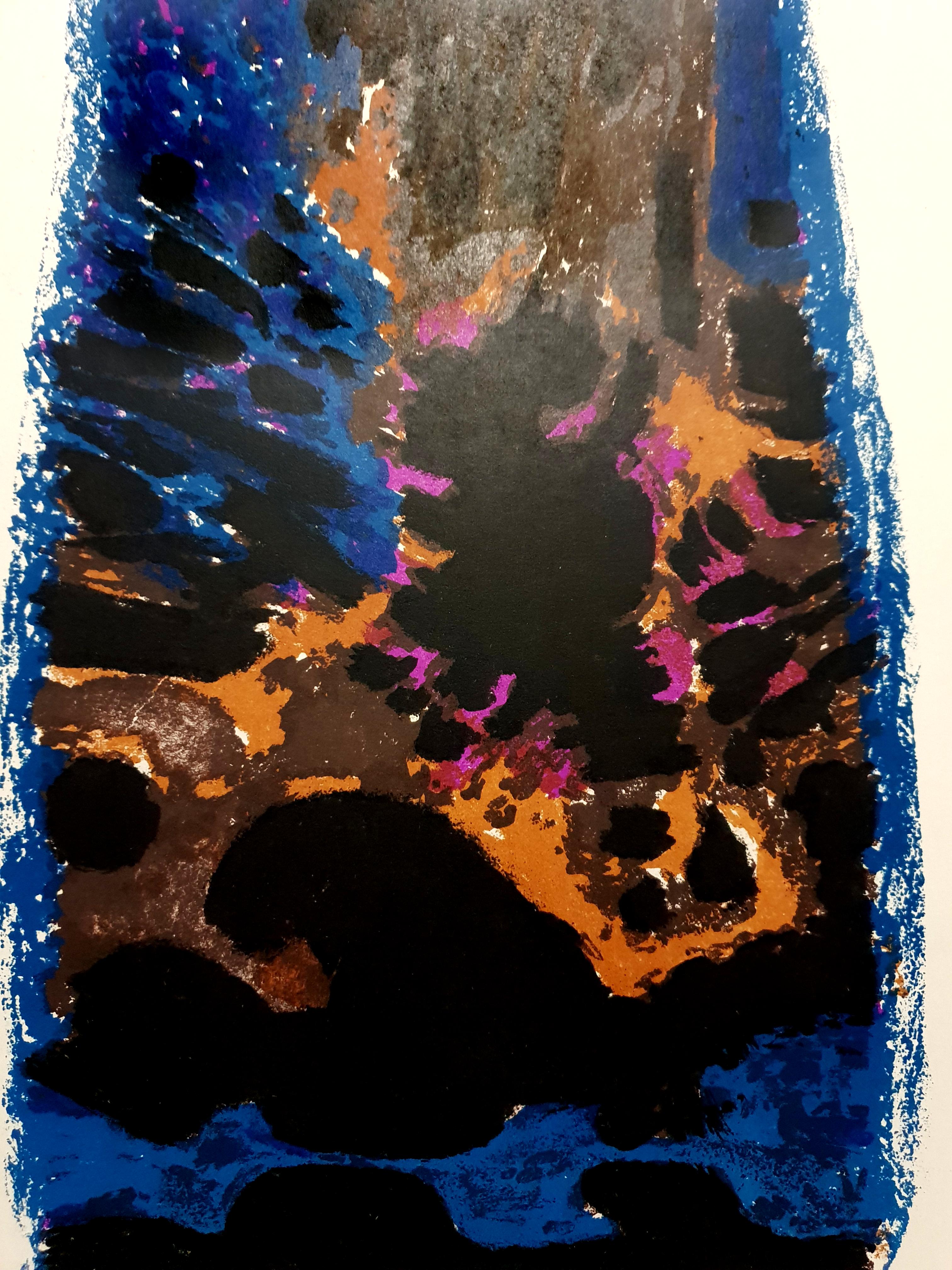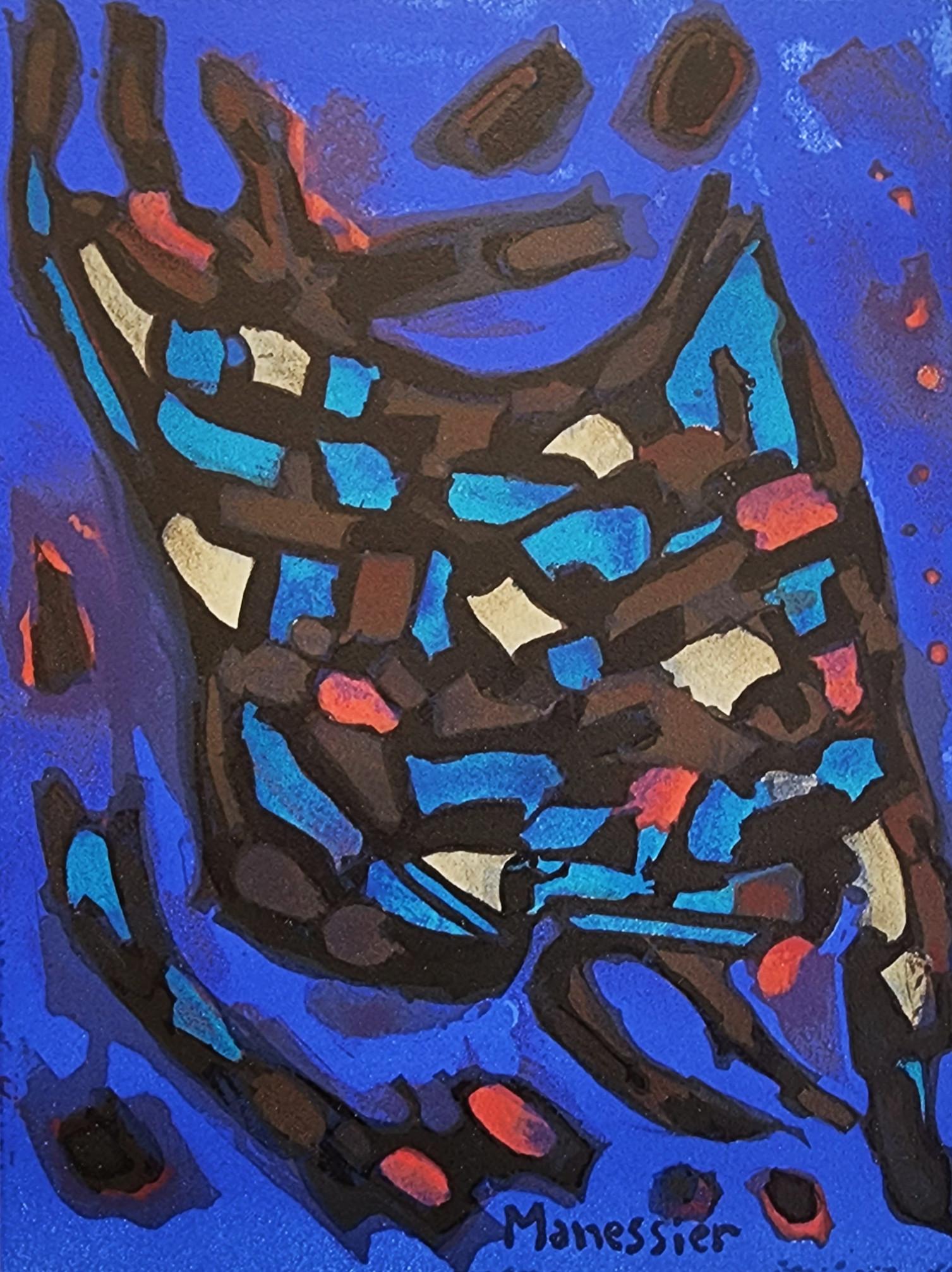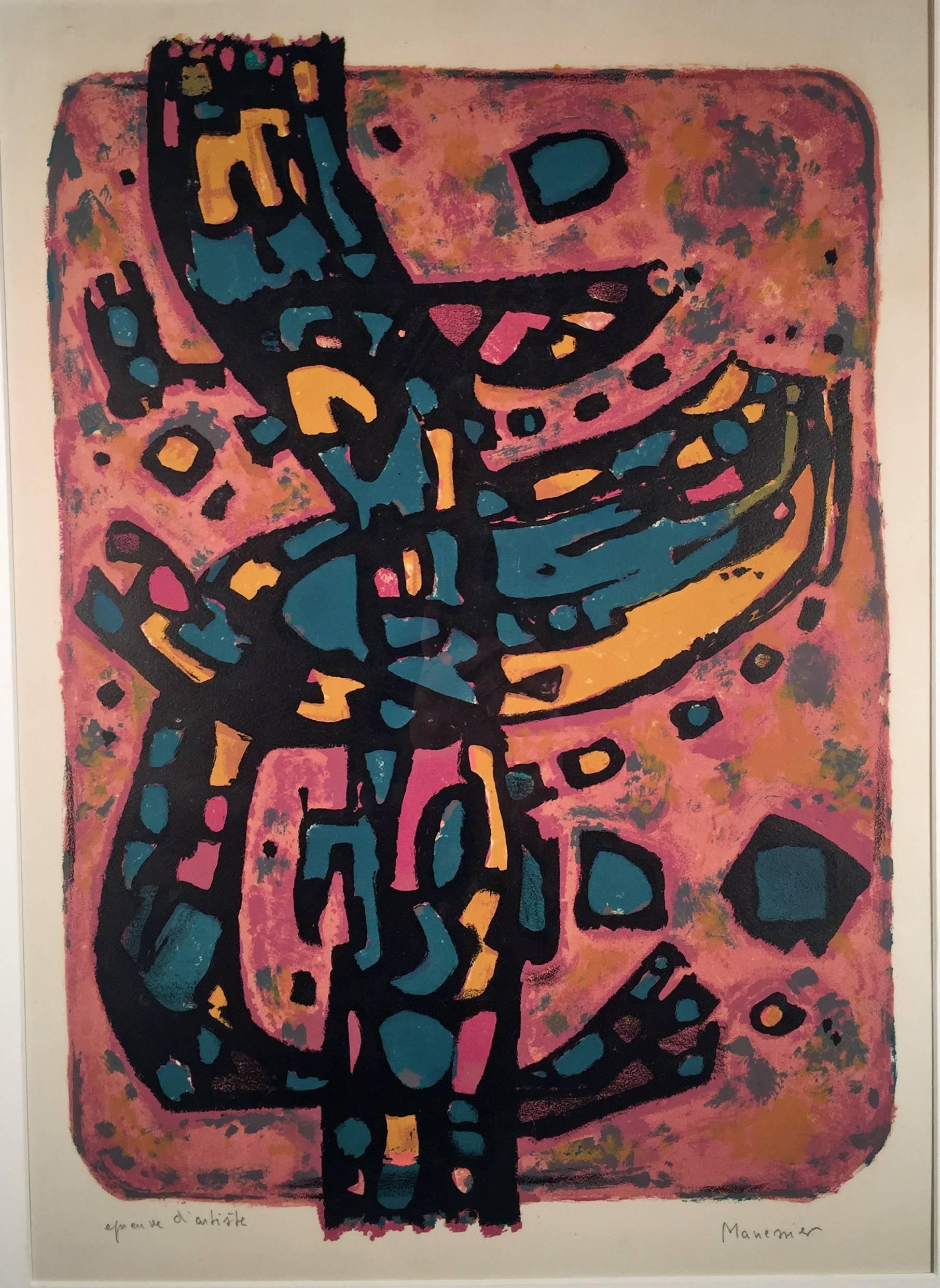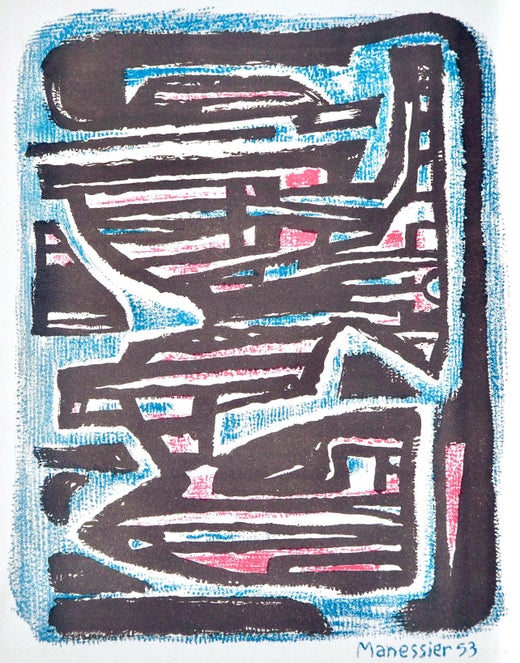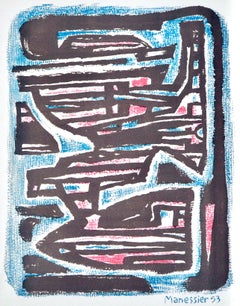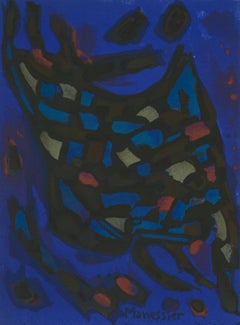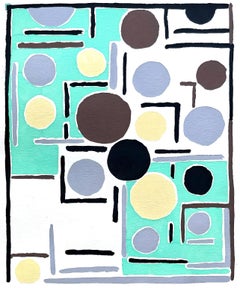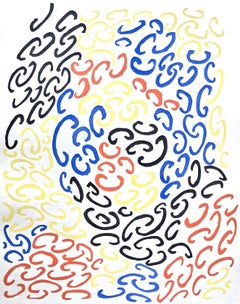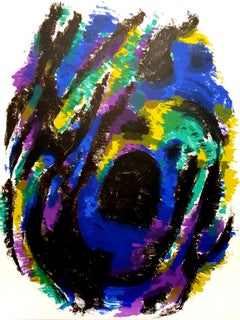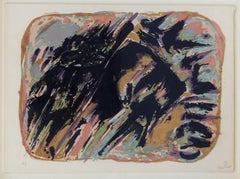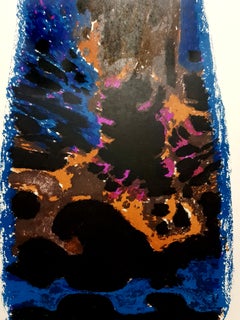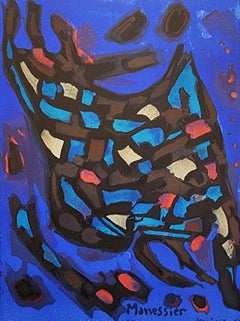Articoli simili a Le Nid, Petite tache noire n°1, Société internationale d'art XXe siècle
Vuoi altre immagini o video?
Richiedi altre immagini o video al venditore
1 di 7
Alfred ManessierLe Nid, Petite tache noire n°1, Société internationale d'art XXe siècle1960
1960
619,05 €
773,81 €20% in meno
Informazioni sull’articolo
Litografia su carta vélin. Formato carta: 12,4 x 9,65 pollici. Iscrizione: Non firmato e non numerato, come emesso. Note: Dall'album, XXe siècle, Nouvelle série, XXIIe Année, N° 15, Noël 1960, Cahiers d'Art publiés sous la direction de Gualtieri di San Lazzaro, 1960. Pubblicato dalla Société Internationale d'Art XXe siècle, Parigi, sotto la Directional di San Lazzaro, éditeur, Parigi; stampato da Mourlot Frères, Parigi, 1960. Note aggiuntive: Estratto dall'articolo accademico "Promoting Original Prints, The Role of Gualtieri di San Lazzaro and XXe Siècle" di Valery Holman, pubblicato su Print Quarterly, XXXIII, 2016, 2, Fino a poco tempo fa è stato scritto molto poco sull'autore ed editore d'arte italiano Gualtieri di San Lazzaro (1904-75), eppure per 50 anni ha raccontato la vita e le opere di artisti contemporanei, ha prodotto monografie di qualità eccezionale e ha diffuso stampe originali di pittori e scultori moderni attraverso il suo periodico più noto, XXe Siècle. Sebbene sia ancora una figura relativamente poco conosciuta nel Regno Unito, San Lazzaro è uno della mezza dozzina di grandi editori d'arte della metà del ventesimo secolo che, insieme al suo modello, Ambroise Vollard (1866-1939), e a quelli della sua stessa generazione, Christian Zervos (1889-1970), Tériade (1889-1983) e Albert Skira (1904-73), scelse di basarsi a Parigi, considerandola per tutta la vita il centro del mondo dell'arte....XXe Siècle, un periodico illustrato, fu lanciato nel 1938 e stampato in edizioni di circa 2.000 copie; ogni numero conteneva fotografie e riproduzioni in quadricromia separate da un ampio spettro di immagini visive che spaziavano dai capolavori della pittura occidentale alle stampe popolari dell'Estremo Oriente. Il suo grande formato, il design vivace e la stretta integrazione tra testo e immagine colpirono immediatamente, ma la sua caratteristica più innovativa, introdotta su suggerimento di Hans Arp (1886-1966), fu l'inclusione di stampe originali di artisti contemporanei in ogni numero. Con un ovvio interesse per i collezionisti, XXe Siècle è stata concepita anche per far conoscere a un pubblico più ampio e internazionale la pittura e la scultura contemporanee attraverso riproduzioni a colori di buona qualità e l'immediatezza delle stampe originali. Paragonabile per prezzo ai Cahiers d'Art, i primi numeri di XXe Siècle si sono esauriti rapidamente. Sebbene le preferenze estetiche di San Lazzaro tendessero verso l'astrazione lirica, egli chiarì che XXe Siècle era apartitica [la pubblicazione cessò durante la Seconda Guerra Mondiale].... Nel 1951, San Lazzaro rilanciò XXe Siècle con argomenti tematici basati sui materiali o incentrati su un argomento di interesse attuale nelle arti visive, in particolare in Europa: concetti di spazio, materia, monocromia, creazione di segni e segno". Una caratteristica distintiva della nuova serie era il dialogo artistico dell'Italia con la Francia: mentre San Laz-zaro si era originariamente concentrato su pittori e scultori parigini, il suo obiettivo era quello di creare una rete internazionale, di far conoscere il lavoro di artisti francesi in Italia e di artisti italiani in Francia e di estendere successivamente questo asse bilaterale al mondo anglofono. Gli artisti rappresentati nel n. I da una stampa originale erano tutti noti come scultori: Arp, Laurens, A.A. Moore (1898-186) e Marino Marini, San Lazzaro non solo cercava di mostrare ai lettori l'intera gamma di opere di un artista, ma anche di incoraggiare la produzione di stampe, uno stimolo molto apprezzato, ad esempio, da Magnelli.... In condizioni di salute precarie, nel 1968 San Lazzaro perse il controllo di XXe Siècle a favore di Léon Léon, un tipografo-editore che aveva fornito un sostegno finanziario e un aiuto per la distribuzione in America". I numeri tematici cessarono e furono sostituiti da un "panorama" dell'anno, ma San Lazzaro era ancora attivo come editore di libri e album di stampe....Poco dopo la sua morte, San Lazzaro stesso fu oggetto di due mostre: Omaggio a XXe Siècle" a Milano nel dicembre 1974, incentrata sul lavoro grafico degli artisti a lui più vicini in tarda età, mentre "San Laz-zaro et ses Amis" al Musée d'Art Moderne de la Ville de Paris nel 1975 presentava le opere di tutti coloro di cui aveva promosso il lavoro per più di 50 anni: Arp, Calder (1898-1976), Capogrossi, Chagall, Sonia Delau-nay, Dubuffet, Estève, Lucio Fontana (1899-1968), Gili-oli (1911-77), Magnelli, Marini, A.A. Moore e Poliakoff. Questa mostra è stata vista da uno dei suoi più stretti collaboratori come un ritratto indiretto di San Lazzaro, un uomo complesso la cui modestia e riservatezza nascondevano la sua incessante volontà di estendere l'apprezzamento internazionale dell'arte contemporanea e di avvicinare il pubblico dei lettori alla sua realizzazione attraverso il mezzo della stampa.
ALFRED MANESSIER (1911-1993) è stato un pittore, artista di vetrate e disegnatore di arazzi francese non figurativo, appartenente alla nuova Scuola di Parigi e al Salon de Mai. Trovando ispirazione nell'ambiente naturale della sua regione natale, Manessier iniziò a dipingere paesaggi fin da giovane. Per quanto riguarda la sua formazione formale, studiò architettura, prima ad Amiens e poi come studente di architettura all'École des beaux-arts di Parigi, nel 1929. Manessier non amava l'atmosfera formale della scuola e preferiva copiare i dipinti del Louvre, in particolare quelli di vecchi maestri come Rembrandt van Rijn, Peter Paul Rubens e Tintoretto, e frequentare gli atelier di Montparnasse. Nel 1935 studiò brevemente all'Académie Ranson sotto la guida di Roger Bissière, che introdusse Manessier alla tecnica dell'affresco e, prima della Seconda Guerra Mondiale, i suoi dipinti iniziarono a riflettere influenze cubiste e surrealiste. Nel 1939 Manessier fu arruolato nel servizio militare.
Nel dopoguerra, Manessier fu associato all'Astrazione lirica (Abstraction lyrique) e all'Art Informel. Tuttavia, il suo lavoro aderisce anche a un filone più specifico dell'arte francese apparso durante l'occupazione tedesca e incorpora temi e simbolismi cristiani in composizioni semiabstract. Il pittore cattolico Jean Bazaine, forte sostenitore dell'art sacré (arte sacra), incluse le opere di Manessier nella famosa mostra Vingt jeunes peintres de tradition française (Venti giovani pittori della tradizione francese, 1941) organizzata alla Galerie Braun di Parigi, in segno di sfida ai nazisti. Nel 1943, Manessier ebbe un risveglio religioso durante un ritiro di tre giorni in un monastero trappista. Poco dopo si convertì al cattolicesimo romano e iniziò a seguire uno stile di vita sempre più ascetico. Nel 1945 le sue composizioni iniziarono a ricordare le vetrate e divennero più astratte, anche se continuarono a comparire elementi figurativi legati alla religione e al paesaggio. I suoi dipinti alludono a significati religiosi attraverso i titoli e le combinazioni di simboli riconoscibili e immagini astratte.
Sebbene Manessier abbia inizialmente ottenuto il riconoscimento internazionale per i suoi dipinti, era in grado di utilizzare diversi mezzi, tra cui la litografia, oltre a realizzare disegni per arazzi, oggetti liturgici e paramenti. Su sollecitazione di Georges Rouault, Manessier iniziò a lavorare sulle vetrate nel 1948 e completò molte opere per chiese in Francia, Germania, Spagna e Svizzera. A partire dal 1956, il simbolismo religioso e i temi politici coesistono in una serie di opere che rispondono a vari eventi politici come la crisi di Suez, l'invasione dell'Ungheria e l'assassinio di Martin Luther Jr. Negli anni '60 Manessier fece diversi viaggi in Spagna, dove fu influenzato dalle opere di El Greco e Francisco De Goya, oltre che in Canada, nei Paesi Bassi e nel sud della Francia, dove i paesaggi naturali - un tema persistente in tutta la sua opera - influenzarono il contenuto e lo stile del suo lavoro in quel periodo. Nel 2007, il dipinto di Alfred MANESSIER, Turris Davidica, è stato venduto per 593.217 dollari alla Cornette de Saint Cyr di Parigi, stabilendo un record mondiale per l'artista.
- Creatore:Alfred Manessier (1911 - 1993, Francese)
- Anno di creazione:1960
- Dimensioni:Altezza: 31,5 cm (12,4 in)Larghezza: 24,52 cm (9,65 in)
- Tecnica:
- Movimento e stile:
- Periodo:
- Condizioni:
- Località della galleria:Southampton, NY
- Numero di riferimento:1stDibs: LU1465216495532
Alfred Manessier
Alfred MANESSIER nacque il 5 dicembre 1911 a Saint-Ouen, nella Somme. Formatosi all'Ecole des Beaux-Arts di Amiens (1924 - 1929), completò la sua formazione all'Ecole des Beaux-Arts di Paris Studio e trascorse un breve periodo nello studio del pittore Roger Bissière, che lo introdusse all'affresco e presso il quale si rifugiò a Boissiérettes nel Lot all'inizio della guerra. Dal 1947 in poi, le vetrate occupano gran parte del suo lavoro, che ora si basa sull'astrazione. Realizzò una ventina di progetti in Francia, tra cui le vetrate della chiesa di Saint-Michel des Bréseux (Doubs), il suo primo incarico (1948 - 1950), quelle della chiesa di Saint-Pierre de Trinquetaille ad Arles (1953) e la cappella di Sainte-Thérèse de l'Enfant Jésus et de la Sainte Face ad Anles (Nord - 1957). Le vetrate della Chiesa del Santo Sepolcro di Abbeville, una delle sue ultime commissioni realizzate tra il 1982 e il 1993, sono considerate il suo capolavoro. Ha anche realizzato una dozzina di progetti di Stained Glass in Svizzera, Germania e Spagna. Come pittore astratto dell'Ecole de Paris, Manessier affrontò spesso soggetti legati alla religione cattolica. I suoi dipinti sono spesso ispirati ai paesaggi del Nord della Francia, ma anche ai suoi viaggi. A partire dal 1956 produsse un gran numero di dipinti politici intitolati "Hommage", che facevano eco alla violenza nel mondo. La diffusione delle sue opere d'arte nello spazio pubblico attraverso queste vetrate gli diede grande notorietà durante la sua vita e i suoi dipinti furono premiati con numerosi riconoscimenti internazionali (come il Gran Premio della Biennale di Venezia, che ricevette nel 1962, insieme ad Albert Giacometti, che ricevette il Gran Premio per la scultura). Morì il 1° agosto 1993 a causa di un incidente d'auto, poco dopo il completamento delle vetrate di Abbeville.
Informazioni sul venditore
4,9
Venditore Platino
Venditori Premium con valutazione 4.7+ e tempi di risposta entro 24 ore
Fondazione nel 1978
Venditore 1stDibs dal 2021
1189 vendite su 1stDibs
Tempo di risposta standard: <1 ora
- SpedizioneRecupero del preventivo…Spedizione da: Southampton, NY
- Politica di reso
Alcune parti di questa pagina sono state tradotte automaticamente. 1stDibs non può garantire che le traduzioni siano corrette. L’inglese è la lingua predefinita del sito.
Garanzia di autenticità
Nell’improbabile caso in cui si verifichi un problema con l’autenticità di un articolo, contattaci entro un anno per ottenere un rimborso completo. DettagliGaranzia di rimborso
Se il tuo articolo non corrisponde alla descrizione, è danneggiato durante il trasporto o non arriva, contattaci entro 7 giorni per un rimborso completo. DettagliAnnullamento entro 24 ore
Hai un periodo di tolleranza di 24 ore per annullare il tuo acquisto, senza necessità di fornire spiegazioni.Venditori professionali selezionati
I nostri venditori di livello internazionale devono aderire a rigorosi standard di servizio e qualità, garantendo l’integrità delle inserzioni.Garanzia miglior prezzo
Se scopri che un venditore ha pubblicato altrove lo stesso articolo a un prezzo più basso, applicheremo lo stesso prezzo.Consegna globale affidabile
La nostra rete di vettori leader del settore offre opzioni di spedizione specializzate in tutto il mondo, inclusa la consegna personalizzata.Altro da questo venditore
Mostra tuttoComposizione, Société internationale d'art XXe siècle
Di Alfred Manessier
Litografia su carta vélin. Formato carta: 12,4 x 9,65 pollici. Iscrizione: Firmata nel piatto e non numerata, come da edizione. Note: Dall'album, XXe siècle, Nouvelle série N° 4 (dou...
Categoria
Anni 1950, Moderno, Stampe astratte
Materiali
Litografia
688 € Prezzo promozionale
20% in meno
Spedizione gratuita
Manessier, Composizione, Stampe dalla stampa di Mourlot (dopo)
Di Alfred Manessier
Litografia su carta vélin d'Arches. Non firmato e non numerato, come da edizione. Buone condizioni. Note: Dall'album "Prints from the Mourlot Press", 1964. Pubblicato da Fernand Mou...
Categoria
Anni 1960, Moderno, Stampe astratte
Materiali
Litografia
619 € Prezzo promozionale
40% in meno
Spedizione gratuita
Delaunay, Planche No. 15, Compositions, couleurs, idées: Sonia Delaunay (after)
Di Sonia Delaunay
Stencil a colori con inchiostri a gouache densi su carta vergata. Non firmato e non numerato con titolo stampato disegnato da Delaunay, in alto a sinistra, come da edizione. Conditio...
Categoria
Anni 1930, Moderno, Stampe astratte
Materiali
Stencil
1241 € Prezzo promozionale
20% in meno
Spedizione gratuita
Delaunay, Planche No. 10, Compositions, couleurs, idées: Sonia Delaunay (after)
Di Sonia Delaunay
Stencil a colori con inchiostri a gouache densi su carta vergata. Non firmato e non numerato con titolo stampato disegnato da Delaunay, in alto a sinistra, come da edizione. Conditio...
Categoria
Anni 1930, Moderno, Stampe astratte
Materiali
Stencil
1241 € Prezzo promozionale
20% in meno
Spedizione gratuita
Composizione 66 (Abadie 66), Société internationale d'art XXe siècle
Di Alberto Magnelli
Linoleografia su carta vélin. Formato carta: 12,4 x 9,65 pollici. Iscrizione: Non firmato e non numerato, come emesso. Riferimenti al catalogo ragionato: Alberto Magnelli, Alberto e ...
Categoria
Anni 1930, Moderno, Stampe astratte
Materiali
Linoleografia
619 € Prezzo promozionale
20% in meno
Spedizione gratuita
Delaunay, Planche No. 33, Compositions, couleurs, idées: Sonia Delaunay (after)
Di Sonia Delaunay
Stencil a colori con inchiostri a gouache densi su carta vergata. Non firmato e non numerato con titolo stampato disegnato da Delaunay, in alto a sinistra, come da edizione. Conditio...
Categoria
Anni 1930, Moderno, Stampe astratte
Materiali
Stencil
1241 € Prezzo promozionale
20% in meno
Spedizione gratuita
Ti potrebbe interessare anche
Alfred MANESSIER - Litografia originale
Di Alfred Manessier
Alfred MANESSIER - Litografia originale
Astrazione colorata
1962
Dal XXe Siecle
Dimensioni: 32 x 24
Edizione: G. di San Lazzaro.
Non firmato e non numerato come emesso
Categoria
Anni 1960, Moderno, Stampe figurative
Materiali
Litografia
Composizione abstraite
Di Alfred Manessier
Litografia, 1975
Edizione : V/XV
56,00 cm. x 76,00 cm. 22,05 pollici x 29,92 pollici (carta)
50,00 cm. x 67,00 cm. 19,69 pollici x 26,38 pollici (immagine)
Litografia appartenente ...
Categoria
Anni 1970, Astratto, Stampe astratte
Materiali
Litografia
Alfred MANESSIER - Litografia
Di Alfred Manessier
Alfred MANESSIER - Litografia
1962
Dal periodico d'arte XXe Siecle (n. 20)
Dimensioni: 32 x 24
Edizione: G. di San Lazzaro.
Non firmato e non numerato, come emesso
Categoria
Anni 1960, Moderno, Stampe figurative
Materiali
Litografia
Composizione (Mourlot, Paris)
Di Alfred Manessier
Alfred MANESSIER
Composizione
1964
Litografia originale a colori su Velin d'Arches
Dimensioni: 10x7.375in
Edizione: 2,000
Firmato nella pietra
Annotato sul verso
Editore: Mourlot, Pa...
Categoria
Anni 1960, Moderno, Stampe e riproduzioni
Materiali
Cartapecora, Litografia
Prezzo su richiesta
FLAMME VIVE
Di Alfred Manessier
Alfred MANESSIER, Alfred. FLAMME VIVE. Litografia a colori, 1959. Prova d'artista in aggiunta all'edizione di 175 copie. Inscritto "Epreuve d'Artiste" e firmato a matita. 20 x 13 1/2...
Categoria
Metà XX secolo, Astratto, Stampe astratte
Materiali
Litografia
605 € Prezzo promozionale
20% in meno
Laudes II
Di Alfred Manessier
Litografia, 1976
Firmato a matita dall'artista
Prova d'artista
Stampatore : Mourlot, Paris
65,50 cm. x 60,50 cm. 25,79 pollici x 23,82 pollici (carta)
57,00 cm. x 49,00 cm. 22,4...
Categoria
Anni 1970, Astratto, Stampe astratte
Materiali
Litografia
